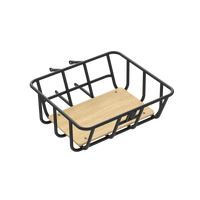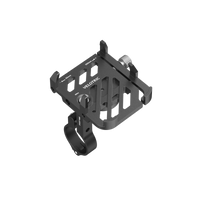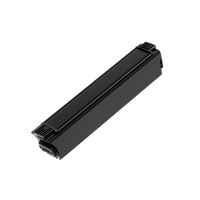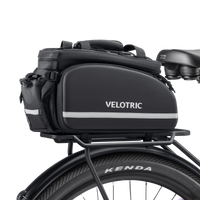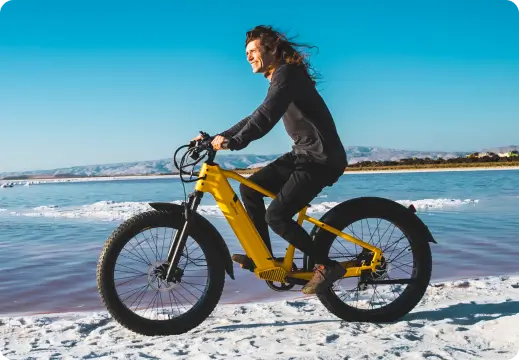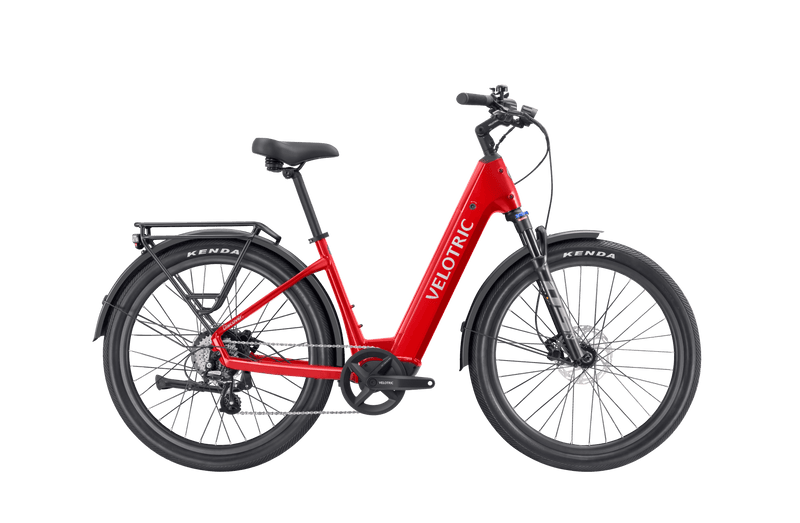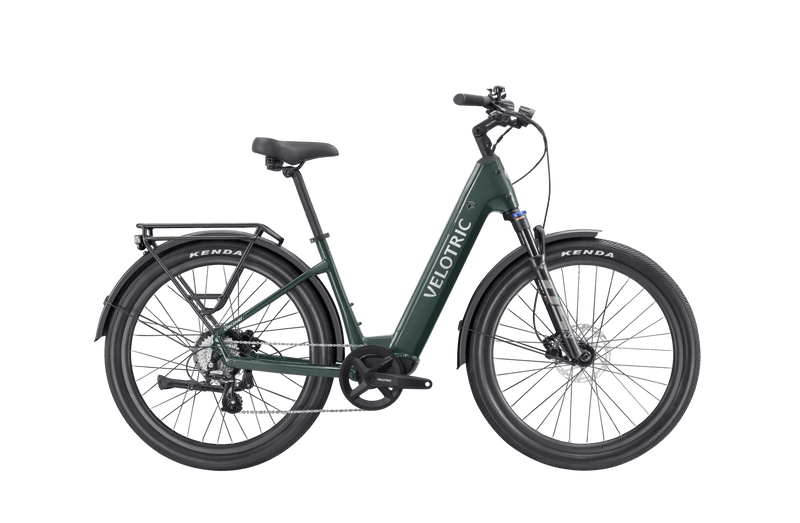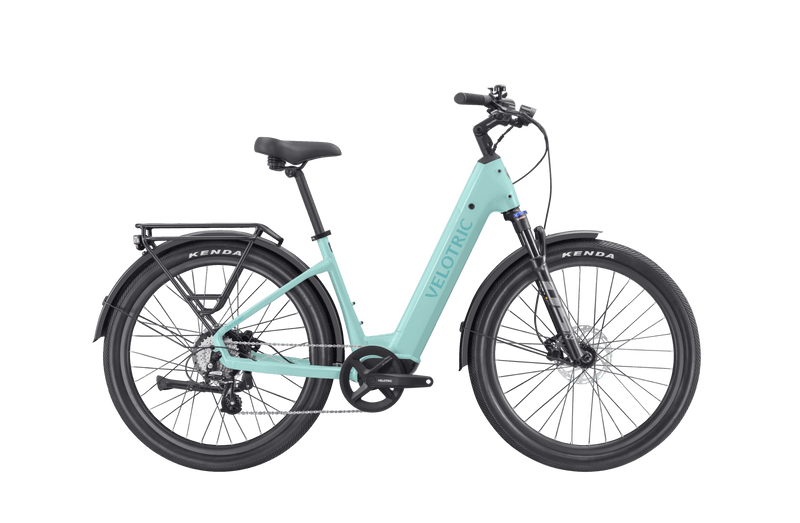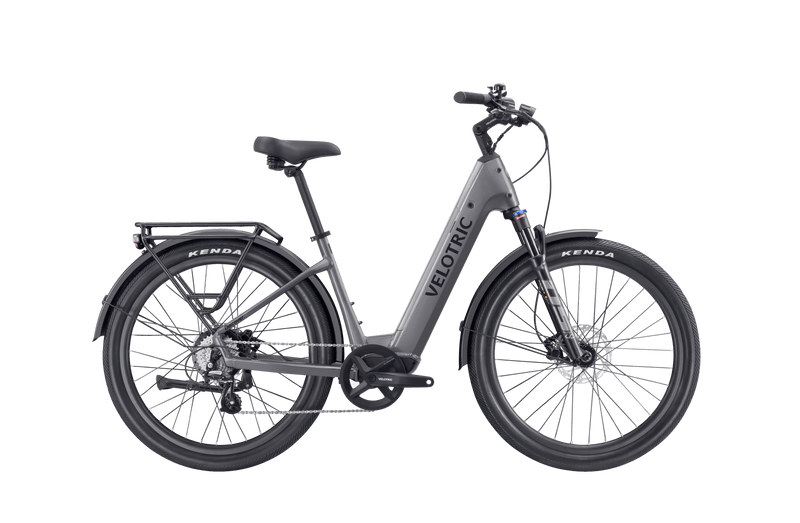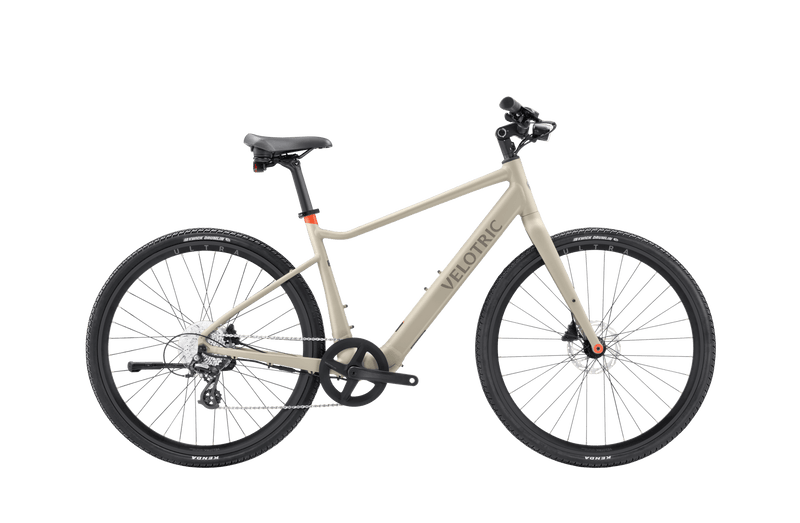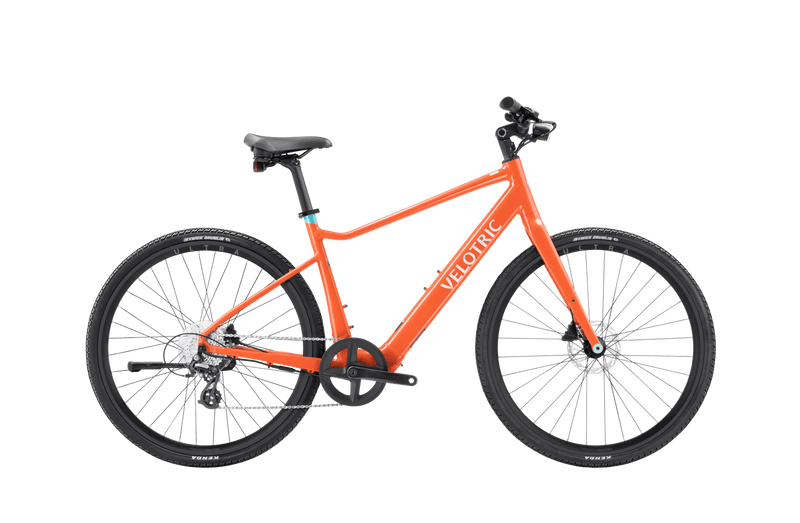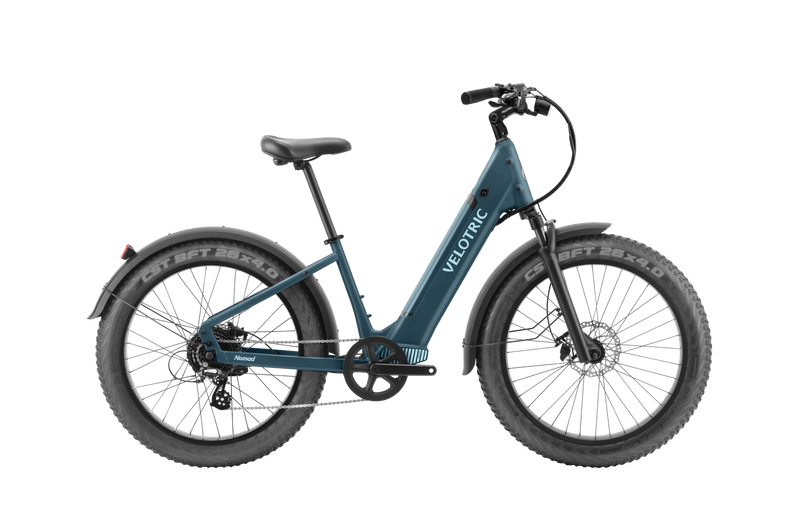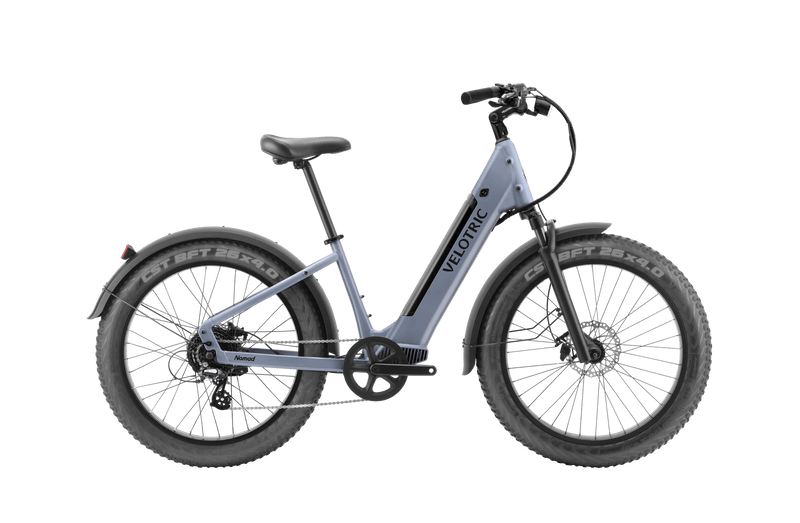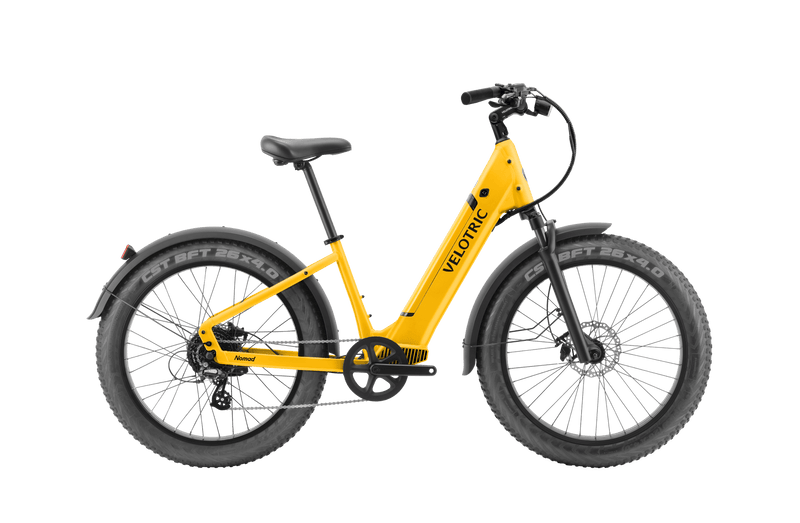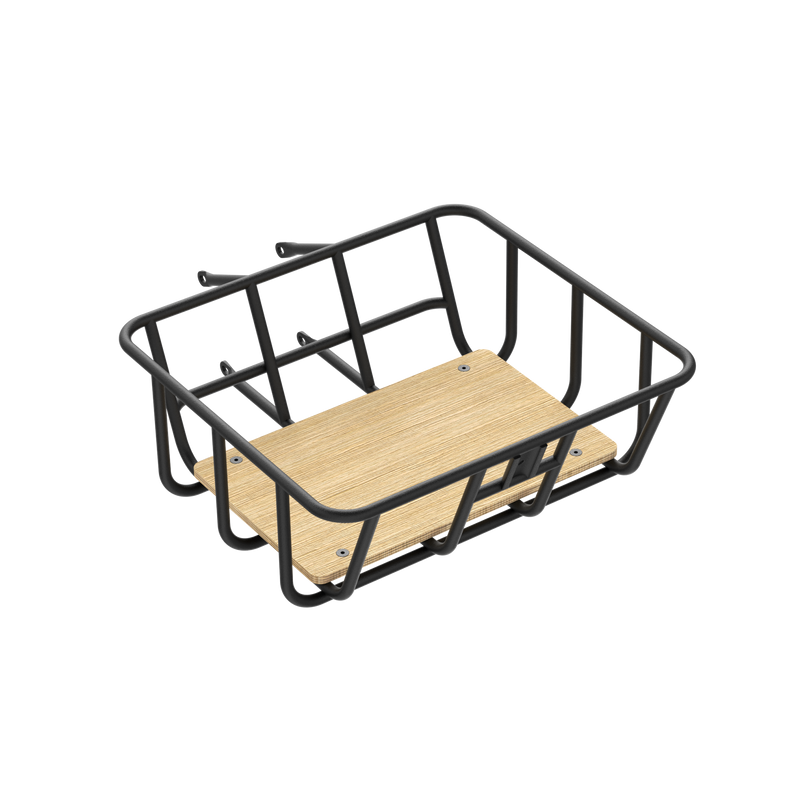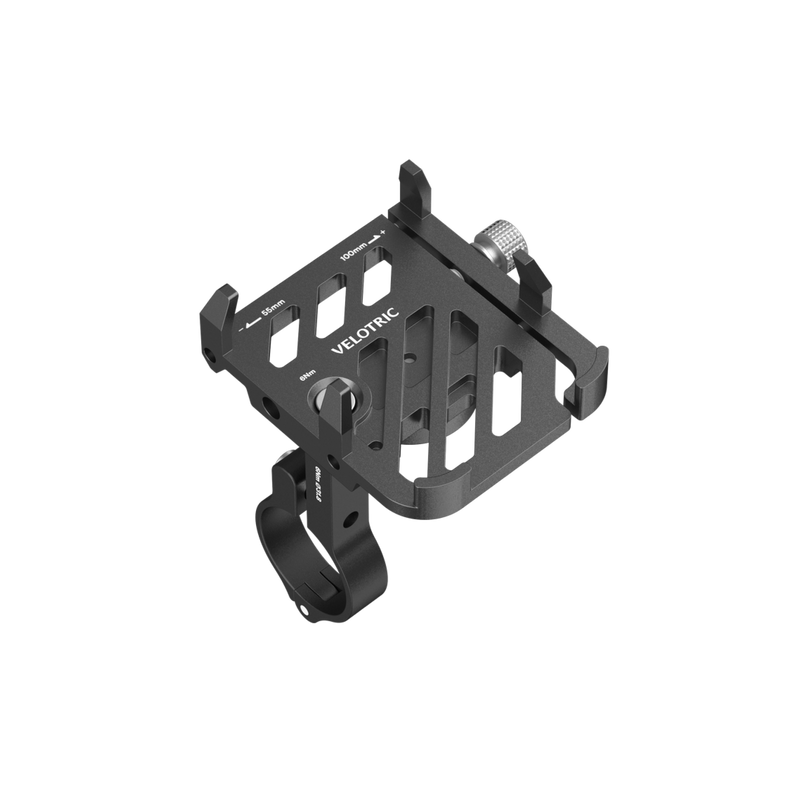An electric bicycle is a great way to get around while staying active.
Whether you want an e-bike for commuting to and from work in the city or are looking for a model that lets you explore more rugged outdoor terrain, there are e-bikes to suit every cyclist's needs. There are even foldable e-bikes you can easily pack up and carry.
But how can you know which bike style is right for you? The bike's wheels are one major thing to consider. Different bicycle wheels are made for different terrains, impacting rider comfort and safety.
In this guide, we’ll explain the different types of e-bike wheels and reveal which wheels are best for which purposes. We’ll also discuss e-bike wheel hubs, the part of the bike that houses the electric motor. Finally, we'll answer some of the most common questions about electric bicycle tires.
By the end of this guide, you should feel confident in your knowledge of e-bike wheels. Let's get to it.
E-bike tire classes
Let's start with the basics: E-bikes have different tire classes. Being able to identify the tire types and understand what they're designed for can help you make the perfect pick when selecting your own e-bike.
Here are the main classes of e-bike tires:
- Road tire: Road tires are slim and lightweight, usually measuring no more than 23 to 25 millimeters in width (25 mm is equal to 0.98 inches, or less than a one-inch wheel). Also, road tires don't have a lot of tread. Why not? The aim is to reduce friction as the front wheel and rear wheel glide over the road, allowing for high-speed riding on asphalt surfaces. The lack of friction also makes it easier to accelerate, allowing cyclists to maneuver easily. While this can make for light and easy handling, the lack of tread can also cause slips on slick, wet surfaces.
- Commuting bike tire: People who regularly ride an e-bike to and from work may prefer a commuting bike over a road bike. The tire's width can range from 28 to 42 mm, thicker than a road bike. This tire type also has more tread than a road bike tire, making it all-weather appropriate. If it's a rainy day, you can still ride to work safely.
- Mountain (MTB) tire: Mountain e-bikes are made for conquering rugged terrain, like dirt paths. To promote stability on these rough surfaces, mountain bike tires (MBTs) are fat, wide, and rigid. They have a lot of traction, with deep treads for gripping the ground. This makes them safe for riding on grass, sand, and dirt.
- Hybrid tire: Also referred to as cyclocross tires, these tires are wider than road tires but usually less bulky than MBTs. They may measure from 30 to 33 mm in width. The tires are often almost flat, with small treads that improve traction on slick surfaces. They may also have small studs to further enhance grip. This type of tire is suitable for riding on muddy trails or gravel, for example.
- Fat tire: Fat tire bikes have tires that are (surprise, surprise) fatter than the average commuter bike or road bike. However, they don't offer the same traction as an MBT. Fat tires have greater puncture protection and run at a lower pressure, giving cyclists more flexibility in terms of terrain (learn more about the benefits of fat tire bikes here). However, the thickness creates more friction on the road, which can slow speeds.
- BMX tire: This kind of tire is specifically designed for bicycle motocross (BMX), a specialty racing sport that takes place on rough-terrain courses with diverse obstacles. BMX e-bikes have a bigger wheel size, and the tires are wide and chunky. The tire tread may vary depending on the style of BMX riding. For example, freestyle BMX requires a wider tire for softer landings after jumps. Unless you're planning a BMX career, this tire isn't relevant for you — but we promised you a full guide to e-bike tires, so we wanted to include it!
How to choose electric bike wheels by riding surface
As you can see from the list above, there's an e-bike wheel for almost every purpose, whether you want a fast ride to work or to conquer crazy jumps on the BMX course.
Choosing the right e-bike tire is largely about the context. Start by asking yourself, "What surfaces will I be riding on?"
Got the answer? Good. Now, read on to find out which bike tire is right for which surface.
The best e-bike wheels for pavement
If you're going to ride exclusively on pavement, you may want to opt for a road tire. Thanks to their slim tires, road bikes don't create a lot of friction on the pavement — meaning a speedy ride. They also don't have a lot of tread, further boosting speed.
That said, the lack of tread and traction on road bikes can make them less stable. If the surface is slick (due to rain, for instance), they're more likely to slip and slide. This can be hazardous.
If you don't have a great need for speed and want greater stability, opt for a hybrid or commuting bike tire. Either option will give you more traction.
Velotric's Discover 1 offers bike tires suited for diverse road conditions. Thicker and with more traction than a road bike tire, the Discover 1 offers great stability, even on gravel surfaces. Plus, the 500W motor (peak 900W) helps make for a smooth ride.
The best e-bike wheels for dirt paths
If you're not sticking to paved surfaces and want to tackle dirt roads, look for a more robust bike tire. Opt for an off-road mountain bike tire for maximum access to all kinds of terrain, from grass to sand. The ultra-wide tires and serious tread will grip the ground wherever you are.
For something less intense that you can still take on city streets, try a fat tire bike. The tires have more width and traction than a road or commuter tire but aren't as bulky as a mountain bike.
The Velotric Nomad 1 is a fat tire bike that offers great stability on rough terrains and in all weather conditions. With a 750W high-performance motor (peak wattage 1200), it provides a smooth riding experience even at eight degrees uphill.
The best e-bike wheels for sand
Sand is a tricky surface that constantly moves under the pressure of the bike wheel. In this context, you’ll want a super-wide tire with deep treads for both stability and traction.
Our recommendation? Go for a mountain bike tire. That said, a fat tire bike like the Nomad 1 may do the trick if you rarely ride on sandy surfaces, and it's less bulky than an electric mountain bike.
The best e-bike wheels for mountain biking
You might think you already know the answer here. If you're going to go mountain biking, you want a mountain bike tire, right? Well, maybe. If you want a tire exclusively for rugged, mountainous terrain, an MTB may be for you.
However, if you want greater versatility, a fat tire bike like the Nomad 1 may do the trick. On top of having a high-performance motor that gets you uphill even at an eight-degree incline, the Nomad 1 is IPX6-grade waterproof and equipped with hydraulic disc brakes, maximizing your safety in all conditions.
How electric bike wheel hubs work to power your ride
Tires are just one component of an e-bicycle. The electric bicycle motor is just as important. There are three main types of motors: mid-drive motors, direct-drive hub motors, and geared hub motors. Check out our comprehensive guide to e-bike motors to learn more about the different designs.
Regardless of the type, the e-bike motor's function is to help propel the bike forward. The motor is housed in the e-bike wheel hub. A rear hub motor is located by the rear wheel, while a front hub motor is located over the front wheel.
From its location by the wheel, the hub motor helps move the bike forward by speeding up the turning of the bike wheel. The faster the wheel turns, the more ground the bike can cover in a shorter time. As a result, the cyclist enjoys extra power assistance while riding.
Do you have to charge electric bikes?
Something needs to power that electric motor propelling your e-bike, right? The e-bike battery is the answer. To keep the motor running, you have to charge the battery regularly. How often you have to charge it depends on the bike motor's specifications.
For example, the Discover 1 has a 48V 14.4Ah removable battery certified by LG/Samsung. It will take you up to 65 miles on a single charge (it only takes six hours to charge the battery completely).
The Nomad 1 has a 21700 48V 14.4Ah battery. Because the Nomad 1 is heavier than the Discover 1, that battery only gives you a range of up to 60 miles based on a single charge. However, that's still 50% more than other comparable bikes on the market.
Both the Nomad 1 and Discover 1 batteries have UL2271 certifications. This means the batteries are certified by Underwriters Laboratories, a global standards safety organization that attests to a product's quality.
Can electric bike wheel hubs get wet?
Since the electric bike hub protects an electric motor and battery, you may wonder if it can get wet. A well-manufactured e-bicycle hub should be sustainable if it gets splashed when you're riding through puddles, for example. For example, both the Nomad 1 and Discover 1 are IPX6-grade waterproof.
That said, you shouldn't drench the bike hub. Lingering dampness can cause issues like corrosion. It's also advisable to remove the battery when not in use, protecting it against the elements.
E-bike wheel replacement FAQs
Like a standard bike wheel, an e-bike wheel isn't designed to last a lifetime. Learn more about e-bike wheel replacement with these frequently asked questions.
Can you replace e-bike tires?
If your e-bike tires are worn, they may need replacing. This is for your comfort and safety. For example, your mountain bike tire's deep treads are designed to keep you from slipping on a rough surface. If the treads are worn, you're at a greater risk of accidents.
You can replace an e-bike tire similar to how you would replace a standard bicycle tire. However, the difference is that you must disconnect the wheel connected to the electric hub. Read the replacement wheel kit instructions and your bike's user manual before going ahead.
Do e-bikes wear tires out faster than a traditional bike?
E-bike tires shouldn't wear out faster than traditional bike tires. Of course, the wear and tear the bike is subjected to depends partly on you, the rider. For example, riding a thin city bike tire on rough surfaces like gravel and dirt may cause it to wear out faster than normal.
Can you replace an electric bike hub?
Sometimes, it may be necessary to replace an electric bike hub. The good news: It is possible to swap out this critical e-bike component. The bad news: It's a complex process best left to a professional. Don't try to DIY it with a motor kit from Amazon or you could do more harm than good.
How long do electric bike hubs last?
A high-quality electric bike hub can last for many years. You can extend your e-bike hub’s longevity by taking good care of it. For example, only ride your bike on surfaces it's designed for (translation: don't take your commuter bike on the BMX course!).
Ideally, you will also keep the hub away from water, which can cause corrosion. Keeping your entire bike clean, from the handlebars to the spokes, will also minimize the risk of dust, dirt, and other particles infiltrating the hub and potentially damaging it.
Discover the best Velotric e-bike options for you
Tires make a big difference when picking the best electric bike for your life. Velotric offers two unique e-bike models with two distinct types of tires, giving you plenty of options.
The Discover 1 has slimmer tires but sufficient tread to take you from city streets to gravel paths. Meanwhile, the Nomad 1 is a fat tire bike that can keep you comfortable on rougher terrain.
Both the Velotric and the Nomad come in two sizes to accommodate different riders. The step-thru model is for rider heights 5’1” to 6’4”, while the high-step model is for rider heights 5’6” to 6’9”.
Velotric's bikes also come with five-level pedal assist systems (PAS), throttle assist, and hydraulic disc brakes. The user-friendly USB charger juices your bike up to the max in just six hours, and an LCD display tells you how much battery power you have left.
Discover Velotric bikes and schedule your test ride.























